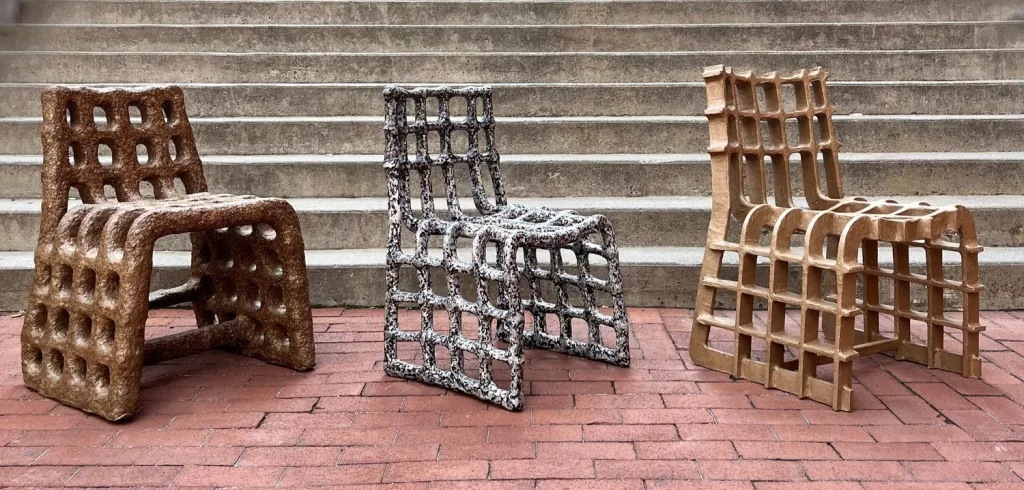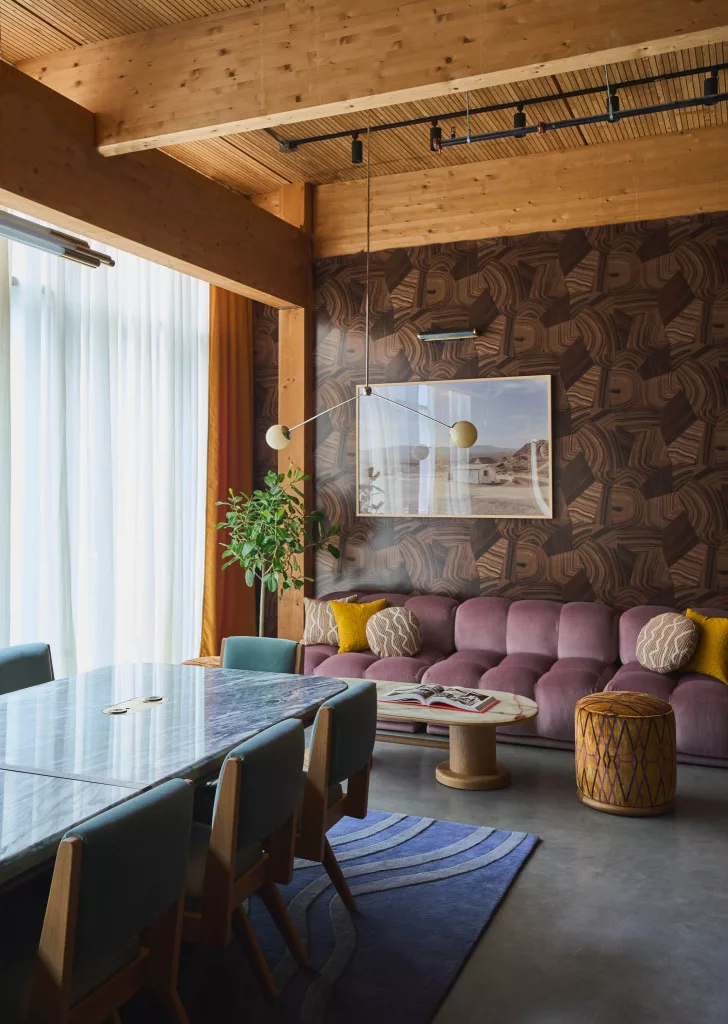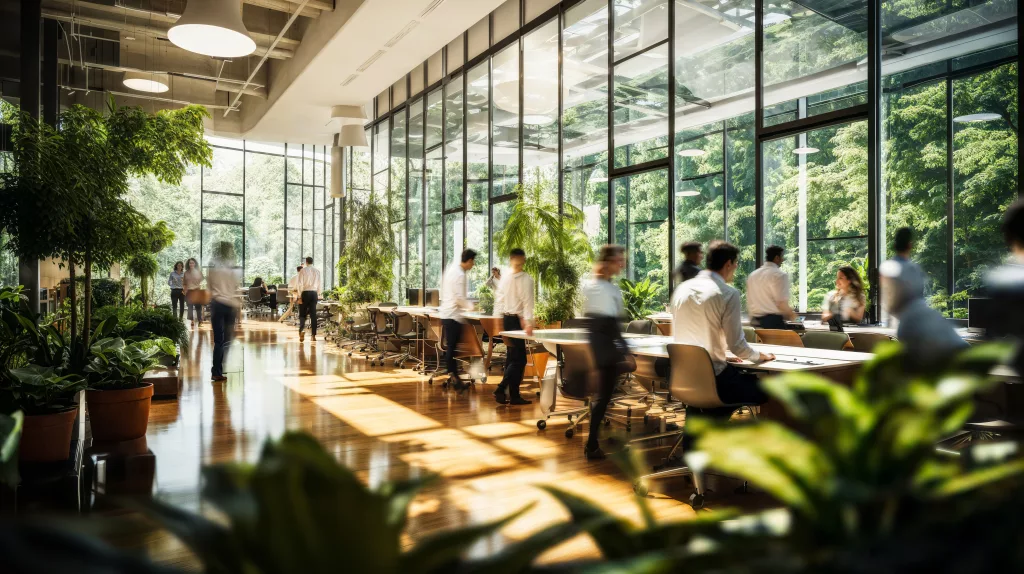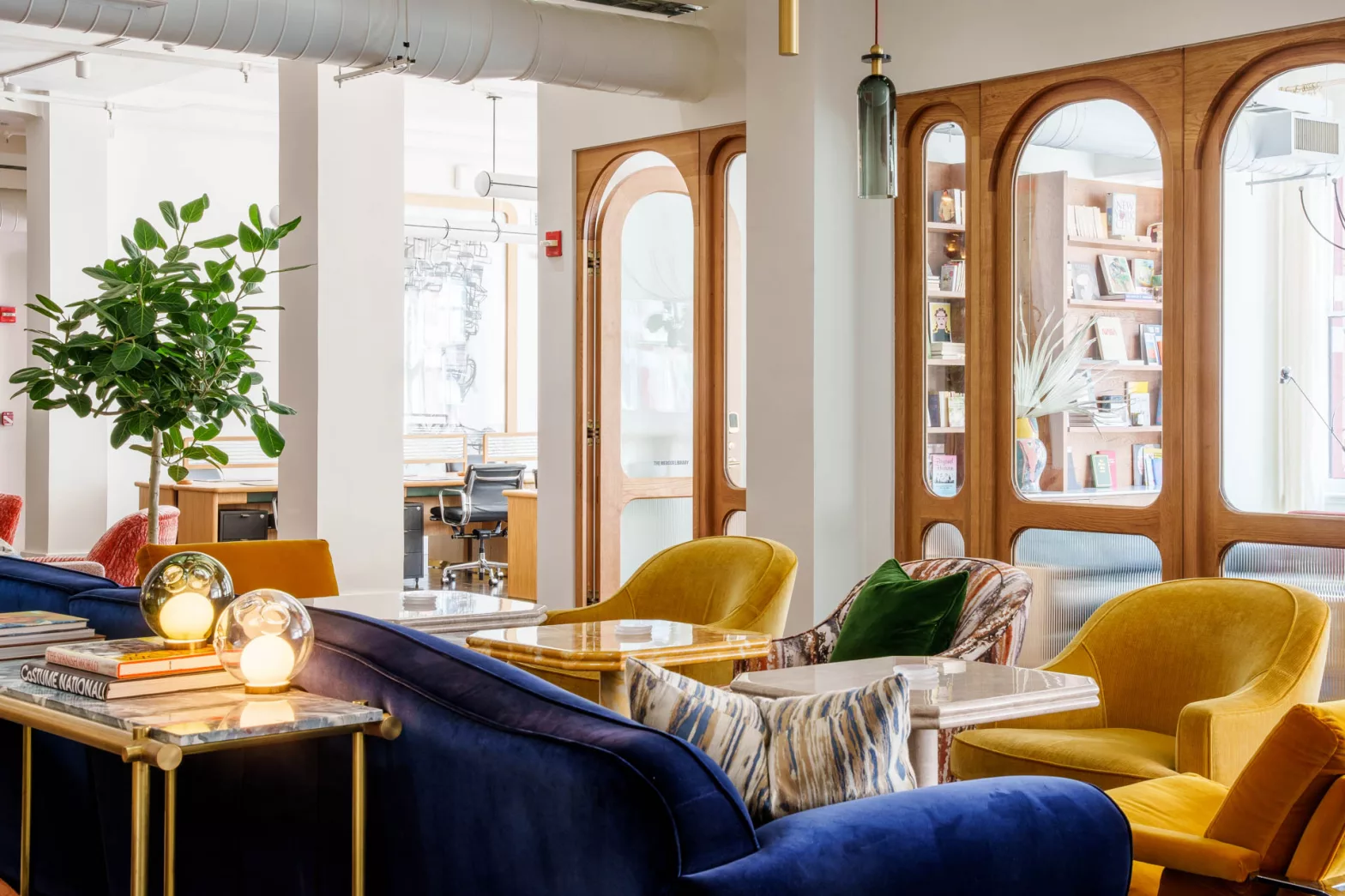Today’s design trends bring energy back to the office with young designers, sustainability and cozy residential comfort.
This month, thousands of designers, architects and brands from across the globe will descend on New York City for New York Design Week. One of NYC’s marquee events, The International Contemporary Furniture Fair (ICFF), brought in over 13,000 guests, up 8% in foot traffic from 2023. It’s safe to say, design is hot right now.
But that begs the question: what trends are driving modern office design today? Expect to see more rich, warm designs in the office, home-like decor, varied lighting sources, sustainable designs and a focus on adaptability and wellbeing.
Young designers and sustainability
A crop of young, innovative designers pushing the limits on creativity to produce sustainable furniture and artwork were the talk of the ICFF. Sustainability in design is so vital today that it’s no longer considered a “trend,” but rather a mandatory notion that all companies must embrace, says Claire Pijoulat, ICFF’s brand director.
The result is a slew of new designs that support the earth. There is furniture made out of repurposed waste, whether it’s discarded bird feeders, scrap steel tubes from local waste sites, old ironing boards, salvaged steel and found objects. And some designers are embracing sustainable materials made from mycelium, the root system of mushrooms.

The material includes the inherent strength and hand-feel of premium leather but unlike similar products, this mushroom leather is produced without high plastic content. Meanwhile, other young designers are inventing new renewable fibers like those designed by Francisco Jaramillo from Fango Studio or compostable chairs made from starch and fiber by SAMINDAMAN.
Modular office design has emerged as another big trend, offering an inexpensive, eco-friendly way to approach constantly-changing needs and hybrid workspaces. Because the modular furniture, rooms and partitions can be moved to new locations and rearranged easily, they offer a more sustainable way to rearrange an office design.
Office Design Will Be Cozier and More Comfortable
For some time, interior design trends were leaning minimal, white, and clean. Most of what is showing up at today’s design shows is deeper, richer and cozier, says Erin Swift, creative director at the Malin, a work-focused members club.
“Things just have a weight to them that feels substantial,” says Swift. This is not to say it’s heavy in a depressing way, but rather a luxurious, rich feel.
Think: dark woods with beautiful grainy, six-wale corduroy, deeper colors like rich hunter green, warm beige, earthy browns, deep burgundy, vibrant pomegranate, and a sun-kissed rusty orange. Designers are playing with different materials, whether it’s wood paneling, stone or metal accent walls. A singular bright color may offer an accent, too, such as a sharp red lamp or bowl.
Swift acknowledges that social media platforms and digital platforms have contributed to the refinement of design preferences. “Everyone’s taste-level has increased 1,000 percent,” she says.

Look for More Office Designs with a Residential Feel
As hybrid and remote work prevail in the workplace, office design has evolved too to embrace residential designs that emote the warmth and comforts of home. In fact, some home interior furniture companies are moving into the office space, redesigning the workplaces of some big brands, says Swift.
“People don’t want to sit in a sterile cubicle with a rolling chair all day,” she says. They want to come in and feel like home and sit on a sofa or nice chair to send out those emails, budgets and presentations. People, she says, want to work in a beautiful space.
Office Designs that Ditch the Fluorescent Lights
The office is no longer drab with rows of fluorescent lights buzzing in the ceiling above. Workplace designers now know that lighting can really make a space. One of the key trends that Swift sees is not relying entirely on overhead lights and instead using floor lamps, task lighting, pendant lighting and sconces to warm up a space. The light can come from a variety of sources and make the office feel more comfortable, inviting, and cozy.
Research on lighting and productivity suggests that natural light is generally preferred and tends to enhance productivity and well-being. However, preferences vary and may depend on task or time of day. The harshness of overhead fluorescent lighting? That’s usually not a great thing for your employees’ mood and concentration, due to the harshness, potential for glare and discomfort.
Bringing the Outside Into the Office
Biophilic design continues to be a big trend in design both in residential and commercial spaces. It’s not just about bringing in greenery, but about bringing more of the outdoors inside. So that could mean incorporating more natural organic materials, such as wood, light, and windows to create a more fluid relationship between the outside and inside. This also could be more organic forms and softer shapes and creating spaces with living walls, green roofs, courtyards or nature-inspired art or designs.

Swift, who recently attended ICFF in New York and Salone del Mobile, the huge design fair in Milan, says she felt as if this was the first year since the pandemic that people were really energized by design again.
“Everything was done so well, and people are passionate,” she says. “Design this year feels great.”
